- News
- Reviews
- Bikes
- Accessories
- Accessories - misc
- Computer mounts
- Bags
- Bar ends
- Bike bags & cases
- Bottle cages
- Bottles
- Cameras
- Car racks
- Child seats
- Computers
- Glasses
- GPS units
- Helmets
- Lights - front
- Lights - rear
- Lights - sets
- Locks
- Mirrors
- Mudguards
- Racks
- Pumps & CO2 inflators
- Puncture kits
- Reflectives
- Smart watches
- Stands and racks
- Trailers
- Clothing
- Components
- Bar tape & grips
- Bottom brackets
- Brake & gear cables
- Brake & STI levers
- Brake pads & spares
- Brakes
- Cassettes & freewheels
- Chains
- Chainsets & chainrings
- Derailleurs - front
- Derailleurs - rear
- Forks
- Gear levers & shifters
- Groupsets
- Handlebars & extensions
- Headsets
- Hubs
- Inner tubes
- Pedals
- Quick releases & skewers
- Saddles
- Seatposts
- Stems
- Wheels
- Tyres
- Health, fitness and nutrition
- Tools and workshop
- Miscellaneous
- Cross country mountain bikes
- Tubeless valves
- Buyers Guides
- Features
- Forum
- Recommends
- Podcast
review
£1,500.00
VERDICT:
Well-equipped, well thought out cross racer with added versatility thanks to hidden mudguard and rack mounts
Weight:
9,040g
Contact:
www.trekbikes.com
At road.cc every product is thoroughly tested for as long as it takes to get a proper insight into how well it works. Our reviewers are experienced cyclists that we trust to be objective. While we strive to ensure that opinions expressed are backed up by facts, reviews are by their nature an informed opinion, not a definitive verdict. We don't intentionally try to break anything (except locks) but we do try to look for weak points in any design. The overall score is not just an average of the other scores: it reflects both a product's function and value – with value determined by how a product compares with items of similar spec, quality, and price.
What the road.cc scores meanGood scores are more common than bad, because fortunately good products are more common than bad.
- Exceptional
- Excellent
- Very Good
- Good
- Quite good
- Average
- Not so good
- Poor
- Bad
- Appalling
Trek's Ion CX Pro is a race worthy bike that's perfect for anyone serious about trying cross racing. It's well thought out and executed, and comes complete with the right kit to hammer around a park for an hour. The added versatility of the mudguard and rack mounts is just a bonus.

With Trek's merging of the Gary Fischer brand into their own range, they've undoubtedly become a bigger player in the cyclocross market, an area in which they were conspicuously absent previously. These days, you'll find their frames being ridden to World cup victories under the likes of Katie Compton.
Splitting the difference between the carbon race-whippet Cronus (reviewed last year by road.cc) and the more commuter focused Crossrip, the Ion CX Pro promises the best of both worlds at a wallet friendly (-ish) price point. It's a bit more than you pay for some, but the CX Pro brings a slightly upgraded spec to the table, making it a more race worthy bike overall.

The Alpha aluminium frame comes with the exact same geometry as the top end Cronus, bolstering its race credentials. Trek haven't tried to reinvent the wheel here, with 73/72 degree seat and head tube angles (for the 58cm frame tested), and a bottom bracket drop of 6.2cm – all rather conventional. The press fit BB86 (86mm bottom bracket width) lops off some weight, as well as hiding those precious bearings away from all that mud and grit. Whether bearing life is actually improved is debatable, but I guess it can't hurt.

The biggest advantage of running a wider BB shell is the increased real estate space it affords the downtube and the two chain stays. The former is gargantuan – an squared off beast that barely tapers at all as it flows up into the head tube. The chain stays themselves are set very widely apart, wider than would be possible with a standard width BB, allowing extra tyre clearance should the going get muddy. The lack of a chainstay bridge or shelf behind the bottom bracket helps in this department too.
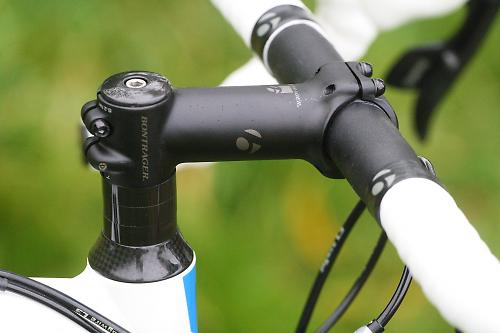
Up front, 1 1/8th to 1.5' inch headset diameters, the standard now for cross bikes, are used to boost steering stiffness and braking response. A fork mounted hanger is another nice touch which, in conjunction with the massive headtube, eliminates brake shudder altogether. It wasn't a case of messing around with the brake pads to achieve this either – there was no judder full stop. The fork is full carbon save for the aluminium dropouts, and provides bags of mud clearance around the front tyre.

The last piece in the monstrous front triangle puzzle is the top tube. As you've no doubt guessed by now, this is massively oversized too, though slightly flattened on the underside for (slightly more) comfortable shouldering.
The rear brake and derailleur cables run along the top of the top tube, whilst the front derailleur cable runs down the downtube. I'm always wary of this routing configuration as the plastic guide on the bottom bracket invariably gets clogged up with even the merest hint of grass. Unfortunately, front derailleur pulleys aren't without their drawbacks either, so until the big players come out with a top swing road front derailleur, compromises will have to be made in this area. Trek have run the cable itself quite close to the downtube, so the likelihood of catching your glove on it accidentally, when making a grab at the downtube is minimised. You end up just gripping both downtube and cable at the same time.

Whilst most of the focus seems to have been on making the Ion into a cross race machine, everyday practicality has not been forgotten. They may not be immediately noticeable, but the Ion comes with Trek's 'vanishing' mudguard mounts and even eyelets for a rear rack.
Moving onto the component spec, the Ion CX pro comes with Sram Rival for the shifty bits, Avid Shorty 6s for the stoppers, and Bontrager finishing kit and wheels.

For cyclocross use, Sram shifting is a bit like Marmite in that you either love it or hate it. Me, I'd have to say that I'm not particularly enamoured. Due to the complex cable routing in the shifter body, cable friction has always been a bit of an issue with Sram, with the company's Red flagship group coming stock with gore sealed cables to address this. Even on the very first ride, the lever action felt heavy and forced on the Ion and it only got worse from there on in.
After a few muddy races and power washes, the shifting became impossible to set up right without resorting to a cable change. A swap to some form of fully sealed (and slippery) cable should be the first item on the upgrade .

The Sram S300 cranks come with a cross specific 38/46 chainring combo which, combined with the 11-28 cassette out back, should be more than enough to tackle anything a cross course can dish out. This gearing can be a little too much for certain off road climbs where the effort required is more prolonged than a short burst of power. In that scenario, a more traditional 36 tooth inner ring would be a better option. Not a massive issue, but something to bear in mind if your idea of cross is of a more exploratory nature than laps of a muddy playing field.
Rolling stock comes courtesy of Bontrager's tubeless ready Race wheelset. At a claimed 1720g for the pair, they're decently light for a bike in this price range and certainly light enough to get stuck into some racing.

I didn't have the necessary Bontrager rim strips and valves to hand - you'll have to purchase them separately. That meant I wasn't able to test out the wheelset's tubeless performance, so that review will have to wait another day.
But all tyre models are compatible, from standard clincher to road tubeless models.
In keeping with the current trend for wider rims, the Race rims measure 23mm across the brake track. The advantage of this for cross comes from the improved tyre sidewall support this provides, making handling at lower pressures more predictable. The downside is that you'll have to re-adjust your brakes by a considerable amount if you were to swap a standard width rim back in there. This lack of compatibility may be an issue for those relying on a spare set of standard width wheels during a race.

But light weight and useful width is nothing if the wheel itself can't stand up to the abuse a cross bike is subjected to. One month into the test period, both rims have been knocked slightly out of true and the rear hub is beginning to show signs of play. Granted, the standard construction means that both these problems can be easily remedied, but I'd have expected them to fare better.
If there's one thing that hardcore 'crossers like to go on about, it's tyres. Here, the Ion shows its American provenance as the Bontrager CX0 team tyres are more suited to kicking up rooster tails on a dusty berm than tip-toeing around a slimy hairpin. For any serious racing, something knobblier is advised. As a tyre for exploration on the other hand, they fare better than expected – their high relative volume soaks up impacts well and the lack of centre tread helps them fly on the road.
Finishing kit is supplied by Bontrager too, though you won't see any carbon bits here – its sturdy aluminium all the way. The curvaceous bars immediately grab one's attention with their anatomic wiggle and widely flared drops. I've never been a fan of the whole anatomic shape, as I rarely find that my hands fit where they're supposed to. These bars haven't swayed me either, although riders with smaller hands may find them more to their liking.

The seatpost is a simple affair, with a one bolt seat clamp holding the saddle in place. Only it doesn't always. My first attempt at an on-the-fly remount ended up with the saddle pointing precariously upwards and I had to use an extra long Allen key (with an extra amount of heft) to get the torque required to stop this from happening. It's really a very poorly thought out design and should really be swapped for something more useful.

The Bontrager Evoke saddle looks well out of place on a race bike such as this, with its generous padding all round. This padding comes in handy on the occasion of a bodged remount, but I found that it felt too soft and saggy to really lay the power down.

And the stem... well, it's a stem.
As you'll no doubt be aware, the big thing in the cross market these days are disk brakes, and many buyers will rightly be wary of buying into technology that will be obsolete in a year or two. While the top European racers are still sticking to their trusted cantis, it seems almost inevitable that discs will replace them when Shimano and Sram jump into the fray with their own models.
As for the Avid Shorty 6s on the Ion, I can say that they're about as good as any cantilevered brake out there. Power is plentiful and controllable, and set up is much easier than typical. They do lose a lot in the wet, but I can't honestly say I've been held back in a race because of that (typically, the mud does the slowing down for you in that case). For bigger, rougher descents that you'd usually tackle on a mountain bike then there's no question – discs are the way to go.
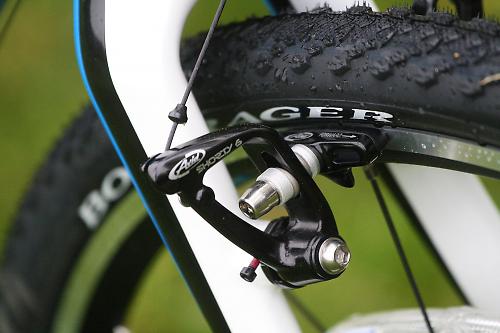
Ride
Swing a leg over it, and the Ion immediately feels like a traditional cross bike – tall and short. The included 90mm stem exacerbates this feeling and I swapped it immediately for a 120mm length to put more weight on the front wheel. With this revised weight distribution, I felt that the Ion was more willing to turn round tight corners where front tyre grip is all important.
Part of the somewhat tipsy slow speed handling can be put down to the bars which are very wide, especially when in the drops. These slow down the steering noticeably as they require more input for the same rotation of the wheel. Where the bars and the bike in general come into their own, is on fast, slippery corners where the increased stability afforded boosts confidence. In races, I found myself making up ground on the more technical descents (read: steeper) where speeds were a little higher. In these scenarios, the weight distribution felt spot on whilst in the drops, giving me the confidence I needed to push it.

The solid front end should also take some credit here as the bike wasn't deflected off line by rocks and roots. The lack of brake shudder means that front wheel traction was always maintained even when pulling hard of the levers.
The stiffness of the stays and through the bottom bracket made accelerating out of corners feel quick and responsive, just as a cross bike should. The downside to this is a more jarring ride, but nothing that can't be solved by modulating tyre pressure.

Overall, after the longer stem swap and a bit of time to get used to the slow speed handling, the Ion felt right at home on the race course or equally, out on the local trails.
Verdict
Well-equipped, well thought out cross racer with added versatility thanks to hidden mudguard and rack mounts
road.cc test report
Make and model: Trek Ion CX Pro
Size tested: 58cm
About the bike
State the frame and fork material and method of construction. List the components used to build up the bike.
Colours
Trek White/True Blue/Trek Black
Frame
200 Series Alpha Aluminium, E2, press fit BB, mudguard & rack mounts, cantilever brake bosses
Fork
Trek carbon cross, E2
Sizes
50, 52, 54, 56, 58, 61cm
Wheels
Bontrager Race, Tubeless Ready
Tyres
Bontrager CX0, 700x34c
Shifters
SRAM Rival, 10-speed
Front derailleur
SRAM Rival, 34.9mm clamp
Rear derailleur
SRAM Rival
Crank
SRAM S300, 46/38
Cassette
SRAM PG-1050 11-28, 10 speed
Saddle
Bontrager Evoke 2, chromoly rails
Seatpost
Bontrager Race Lite, infinite tilt adjustment, 20mm offset
Handlebar
Bontrager Race Anatomic-C, 31.8mm
Stem
Bontrager Race Lite, 31.8mm, 7 degree
Headset
Integrated, cartridge bearings, sealed, aluminium, 1-1/8" top, 1.5" bottom
Brakeset
Avid Shorty 6 cantilever brakes w/SRAM Rival levers
Grips
Bontrager Gel Cork tape
Extras
Mudguard & rack mounts
Tell us what the bike is for, and who it's aimed at. What do the manufacturers say about it? How does that compare to your own feelings about the bike?
The Ion CX Pro is aim squarely at the budding cyclocross racer looking for a race worthy frame. According to Trek, it "packs a race bike pedigree and loads of performance into an aluminium Cyclocross chassis. Ion is equally at home on the course or on the commute, in any conditions".
Frame and fork
Overall rating for frame and fork
9/10
Tell us about the build quality and finish of the frame and fork?
Nothing negative to report here. All the welds were neat and inconspicuous. No paint defects to be found.
Tell us about the materials used in the frame and fork?
Aluminium frame with a full carbon fork (minus dropouts).
Tell us about the geometry of the frame and fork?
Very standard for a cyclocross bike. 73/72 degree seat and heat tubes and 6cm of bottom bracket drop.
How was the bike in terms of height and reach? How did it compare to other bikes of the same stated size?
I found the frame size to be accurate, but the short 90mm stem made the cockpit feel cramped and didn't put enough weight on the front wheel for my liking. I swapped it with a 120mm length and that improved things a lot.
Riding the bike
Was the bike comfortable to ride? Tell us how you felt about the ride quality.
The Ion CX couldn't be described as comfortable, but then that's not really a priority in a cross bike.
Did the bike feel stiff in the right places? Did any part of the bike feel too stiff or too flexible?
Frame and fork stiffness is great.
How did the bike transfer power? Did it feel efficient?
Very stiff and responsive under power.
Was there any toe-clip overlap with the front wheel? If so, was it a problem?
Slight amount of toe overlap. This was never a problem when riding or racing.
How would you describe the steering? Was it lively, neutral or unresponsive? Neutral, but best at higher speeds
Tell us some more about the handling. How did the bike feel overall? Did it do particular things well or badly?
It took a while to get used to the width of the bars in slow speed corners, but they provided plenty of confidence for faster sections. Once I'd got used to the feel, I was able to feel comfortable on all terrains.
Which components had the most effect (good or bad) on the bike's comfort? would you recommend any changes?
Tyres make this biggest difference here, and since I swapped the CX0s out almost immediately, I can't really comment here.
Which components had the most effect (good or bad) on the bike's stiffness? would you recommend any changes?
The fork and frame are excellent.
Rate the bike for efficiency of power transfer:
9/10
Rate the bike for acceleration:
8/10
Lighter wheels could have helped in this deparment.
Rate the bike for sprinting:
9/10
Rate the bike for high speed stability:
9/10
Rate the bike for cruising speed stability:
9/10
Rate the bike for low speed stability:
7/10
Low speed handling took a while to get used to
Rate the bike for flat cornering:
8/10
Rate the bike for cornering on descents:
9/10
Rate the bike for climbing:
8/10
The drivetrain
Rate the drivetrain for performance:
6/10
I found the Sram shifting to be heaving and unreliable
Rate the drivetrain for durability:
7/10
The components themselves should last, but you'll have to swap cable often.
Rate the drivetrain for weight:
8/10
Rate the drivetrain for value:
8/10
Tell us some more about the drivetrain. Anything you particularly did or didn't like? Any components which didn't work well together?
The Sram shifting is a bit of a love/hate affair
Wheels and tyres
Rate the wheels and tyres for performance:
7/10
Wheels performed well but tyres are inapropriate for most UK racing.
Rate the wheels and tyres for durability:
6/10
The wheels have needed truing.
Rate the wheels and tyres for weight:
7/10
Ok at this price range.
Rate the wheels and tyres for comfort:
8/10
High volume tyres softened the ride.
Rate the wheels and tyres for value:
7/10
Controls
Rate the controls for performance:
7/10
Rate the controls for durability:
7/10
Rate the controls for weight:
7/10
Rate the controls for comfort:
7/10
Rate the controls for value:
7/10
Your summary
Did you enjoy riding the bike? Yes.
Would you consider buying the bike? Yes.
Would you recommend the bike to a friend? Yes.
Rate the bike overall for performance:
8/10
Rate the bike overall for value:
7/10
About the tester
Age: 20 Height: 190cm Weight: 70kg
I usually ride: Giant TCR Advanced 2 My best bike is: Canyon Ultimate CF7
I've been riding for: Under 5 years I ride: Every day I would class myself as: Expert
I regularly do the following types of riding: road racing, sportives, mtb,
For 5 years, racing was my life and I went all the way from a newbie bonking after 40 miles, to a full-timer plying my trade on the Belgian kermesse scene. Unfortunately, the pro dream wasn't meant to be and these days, you're more likely to find me bimbling about country lanes and sleeping in a bush on the side of the road.
Latest Comments
- mdavidford 1 hour 2 min ago
As opposed to a "prohibiting factor"?
- Secret_squirrel 1 hour 5 min ago
Thanks. Seems like this could have been included in the review....
- Rendel Harris 1 hour 8 min ago
*takes head out of bucket of cold water* No harm done, needed waking up anyway.
- Rendel Harris 1 hour 11 min ago
The trouble with that, desirable as it would appear, is that manslaughter has a pretty high bar; the defendant has to be proven to have been ...
- David9694 1 hour 21 min ago
I'm reminded of this one - live scene from Beccles - especially in the light of all the on street car parking.
- Rendel Harris 1 hour 26 min ago
I think (guessing a bit I admit as details of the original trial are not available) it probably formed part of both the defence and prosecution...
- mdavidford 1 hour 27 min ago
You haven't seen the state of it - I wouldn't let it anywhere near my bike after the toll years of camping have taken on it.
- Mr Blackbird 2 hours 23 min ago
Harsh to arrest somebody, just because their car decided to flip over.
- Alex M. 2 hours 24 min ago
FLR is located in Bulgaria.


























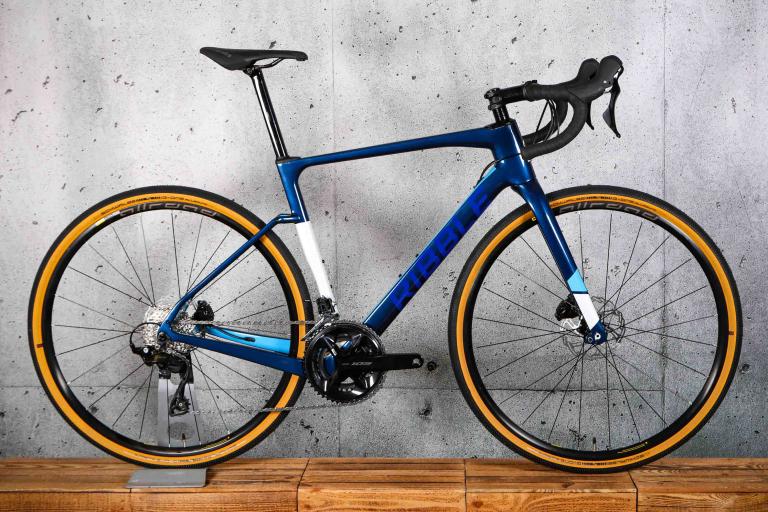
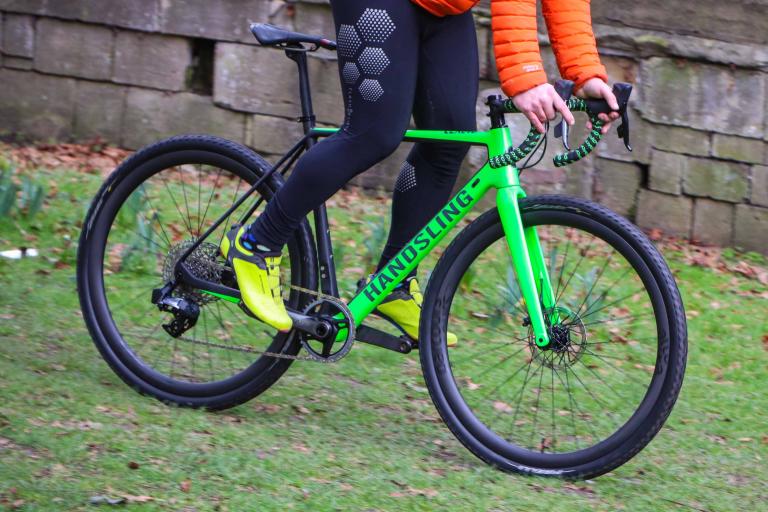

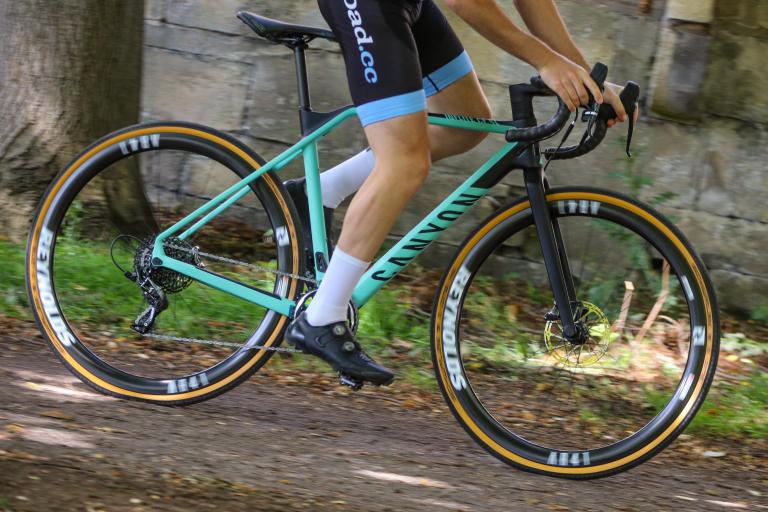
Add new comment
1 comments
A 'cross bike without disc brakes? How very 2011!